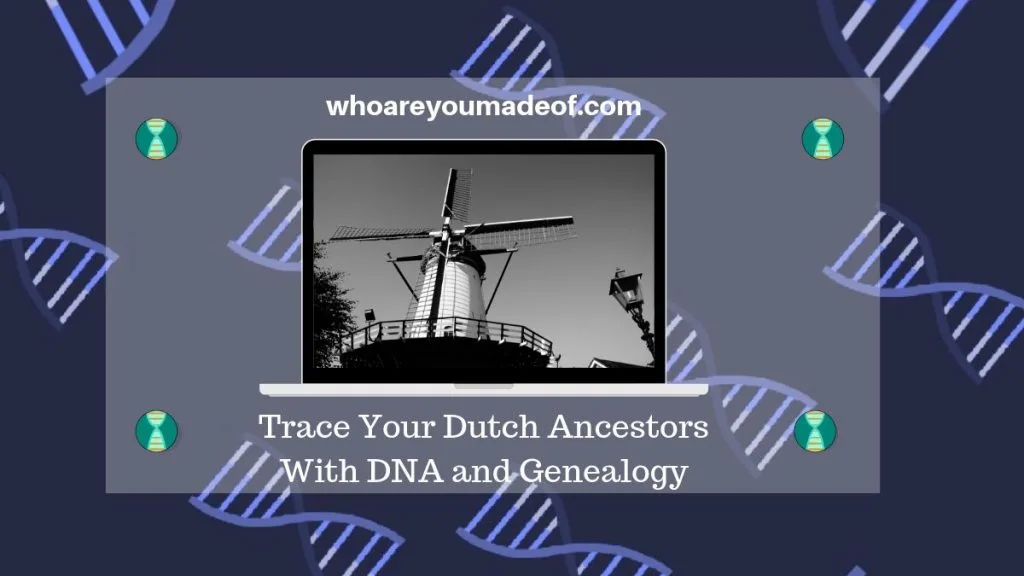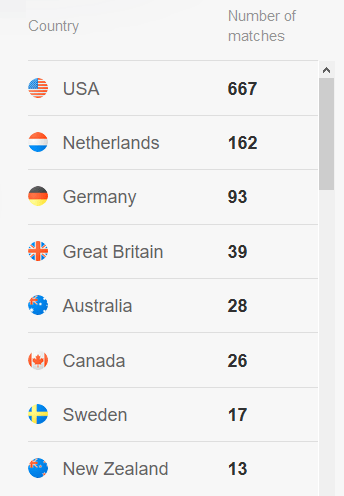If you have Dutch ancestry, you are in excellent company. More than 5 million Americans claim Dutch roots, and many more have Dutch ancestry and don’t know it. Learning about your Dutch heritage can be a very rewarding experience, and in this post, I’ll show you how to use your unique DNA to trace your Dutch ancestors.

My great-great grandfather came to the United States in the 1800s during the middle of the biggest migration of Europeans to North America, from Wagenborgen, Gronigen, Netherlands. Using my DNA, the DNA of several family members, along with traditional genealogy, I was able to trace and verify our family tree all the way back to Wessel Jurjen Brons, born in 1739.
I always thought my surname was so strange growing up, but it turns out that Brons is a very common name in the Netherlands – who would have thought!
Cool fact: Did you know that it’s popular to eat French fries with mayonnaise in the Netherlands?! I’ve seen people do this here in the US, but still haven’t been brave enough to try it. For now, I’m sticking to my fries with ketchup, and silently apologizing to my Dutch ancestors while I eat them.
Dutch Immigration to North America
My great-great grandfather Brons was just one in a long line of Dutch immigrants to the United States. Even before the thirteen colonies united as one country, Dutch immigrants had been making their homes in North America.
The biggest wave of Dutch immigrants to the United States occurred between the years of 1820-1900 when almost 350,000 Dutch immigrants made the journey across the Atlantic to start a new life.
Dutch immigrants settled all over the United States, but there are a few states that ended up home to more than their fair share:
- California
- Michigan
- New York
- New Jersey
- Wisconsin
- Pennsylvania
Cool fact: “The Netherlands” is where Dutch people are from. The word “netherlands” comes from the Dutch word “Nederlanders”, which is used to describe Dutch people. The origin of this word is really interesting – it’s the name of one of the Germanic ethnic groups that settled the area. Dutch people are descended from this Germanic group, and I think it’s pretty neat that the name has persisted for centuries.
Use DNA to trace Dutch Ancestry
As I mentioned at the beginning of this post, I was able to use my DNA, and that of my father and great-uncle, to build my Dutch family tree. I knew the basics of my dad’s Dutch family going back a couple generations, but I really wanted to make sure that I was on the right track with my research.
One thing that I had learned from my DNA testing experience prior to testing my dad and great-uncle was that it’s best to forget the story and follow the DNA.
After testing my dad and great-uncle, I was able to verify my family tree on my Dutch line going back more than five generations. This was based primarily on DNA matches, since my great-uncle’s ethnicity estimate showed what we might expect from someone with a German mother and a Dutch father.
My great-uncle’s Dutch father was the son of my great-great grandfather Brons.
I tested with Ancestry DNA, which is where I recommend beginning your DNA testing adventure. The great thing about Ancestry is that it has the biggest database and the biggest collection of online family trees.
Ancestry DNA is able to compare your family tree with those of your DNA relatives to help you find out how you are related. This is a great way to build your tree back one further generation, and make sure that the names in your tree are correct.
You can get your test via the following sponsored link: Discovery the story AncestryDNA® can tell – I’ll get a small commission at no extra cost to you, thank you for using the link! It’s best to do a DNA test for yourself, and if possible, any older family members who are willing to help you with your research.
Cool fact: It’s important to note that “Holland” does not mean the same thing as when you say the “Netherlands”. Holland is a region within the Netherlands, so someone from Holland is from the Netherlands, but someone from the Netherlands is not necessarily from Holland.
Is it true that the Dutch don’t take DNA tests
There is a rumor going around that people in the Netherlands don’t do DNA testing. While it may be true that DNA testing isn’t as popular in the Netherlands as it is in the United States, this statement would be true for many countries.
I don’t think there is anything about Dutch people that would resist DNA testing more than any other population.
Furthermore, my great-uncle has tons of DNA matches in the Netherlands. I was able to transfer his Ancestry DNA results to My Heritage DNA (for free), and get access to more international DNA matches than are generally available on Ancestry.
Take a look at the countries where his DNA matches are from (on My Heritage) in the image below. As you can see, he has 162 DNA matches who live in the Netherlands, and that’s just on this one site:

Building a Dutch family tree
Even though genealogy isn’t as popular in the Netherlands (mostly because most Dutch people already know that most of their ancestors are from nearby areas), there are many Dutch genealogists that have done excellent research and have posted their genealogies online. Furthermore, it’s pretty easy to find good Dutch records online.
To build your Dutch family tree, you’ll start just like you would build any family tree: with your parents. You’ll also need to have a good place to store and organize your family tree, and for this purpose, I recommend Ancestry.
It’s free to build a tree on Ancestry, even if you don’t have a subscription, and if you do a DNA test with Ancestry DNA, you can easily connect your results with your tree and get more information.
Where to find Dutch records?
Once you’ve gotten your basic tree built, which hopefully includes your parents and grandparents, you should try to figure out who the Dutch immigrant was in your family. You immigration and passenger records for your immigrant ancestor on Ancestry with a subscription.
You can use this sponsored link to get a free trial: Ancestry Free Trial If you subscribe at the end of your free trial, there is a possibility that I may get a small commission at no extra cost to you.
Then, after you figure out who your Dutch immigrant ancestor was, you can begin to investigate which part of the Netherlands hosts records pertaining to your ancestor. For people born in the Netherlands after 1811, there is a good chance that you will be able to locate original records to help you learn more about them.
Family Search has lots of great records which you can access for free. You can learn about them in their post “How to Use Dutch Records on Family Search“.
Conclusion
I hope this post gave you some ideas as to how you can use your DNA and traditional genealogy to trace your Dutch roots and build your Dutch family tree.
If you have any questions about something that you read here, or would like to add your own experience tracing your Dutch roots, I’d love to hear from you in the comments below.
Thanks for stopping by today!

Alternative Facts in Genealogy: Finding the truth in my family tree - Who are You Made Of?
Tuesday 24th of November 2020
[…] sisters and I were sort of raised as thinking we were “Dutch“, and obviously heard lots about our grandmother’s colonial families. My immediate […]